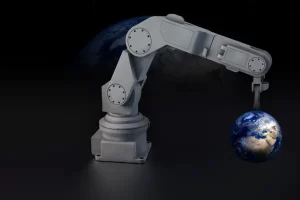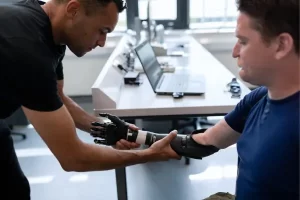Surgery has always been a dynamic field, characterized by a continuous pursuit of innovation and improvement. From ancient practices involving rudimentary tools to the advanced surgical techniques we see today, the medical community is committed to enhancing patient care and surgical outcomes. Among the most significant advancements in recent years is the rise of robotic-assisted surgery, a technology that not only transforms the way surgeries are performed but also greatly benefits both surgeons and patients. This article delves deep into the world of robotic-assisted surgeons, exploring their definition, the technology behind them, their benefits and challenges, common procedures, and what the future may hold.
What is Robotic Assisted Surgery?
Robotic-assisted surgery refers to surgical procedures that are enhanced through the use of robotic systems, allowing surgeons to perform operations with greater precision and control. Unlike traditional surgery, where surgeons operate directly on the patient, robotic surgery utilizes a console from which the surgeon manipulates robotic instruments in real time. This approach significantly enhances the surgical experience by providing a magnified, high-definition view of the surgical field.
Key Features of Robotic Surgery
Minimally Invasive Nature: Robotic-assisted surgeries are often minimally invasive, which means they involve smaller incisions compared to traditional open surgery. This results in less trauma to the body, reduced pain, and faster recovery times.
Precision and Flexibility: Robotic systems provide unparalleled precision. The instruments can make small, delicate movements that are difficult to achieve with the human hand alone. This precision is crucial in complex surgeries where even a slight misstep can have significant consequences.
Enhanced Visualization: Robotic systems are equipped with advanced cameras that offer a three-dimensional view of the surgical area. Surgeons can manipulate these cameras to get a better look at the anatomy, making it easier to navigate during complex procedures.
Common Robotic Surgical Systems
The most widely recognized robotic surgical system is the da Vinci Surgical System, which has been adopted in various surgical specialties, including urology, gynecology, and general surgery. The da Vinci system consists of the following components:
- Surgeon’s Console: The surgeon sits at a console equipped with hand and foot controls that manipulate the robotic arms. The console provides a high-definition 3D view of the surgical site, enhancing the surgeon’s ability to perform precise movements.
- Patient-side Robotic Arms: These robotic arms hold surgical instruments that can be controlled from the console. They can rotate and maneuver in ways that mimic the natural motions of a surgeon’s hands, providing incredible dexterity.
- Vision System: The high-definition camera and advanced optics provide enhanced visualization, allowing for magnification and clarity that surpasses what can be achieved with the naked eye.
Robotic-assisted surgery is rapidly gaining traction due to its numerous advantages and the evolving landscape of medical technology.
The Technology Behind Robotic Surgery
Understanding the technology that underpins robotic-assisted surgery is crucial for appreciating its impact on modern medicine. The primary components include:
Robotic Arms
Robotic arms are the heart of any robotic surgical system. They are designed to replicate the natural motions of a surgeon’s hands, allowing for precision movements. These arms can rotate 360 degrees and operate in tight spaces, making them ideal for intricate surgeries. They are equipped with various instruments, including scalpels, graspers, and suturing devices, tailored for specific procedures.
High-Definition Cameras
One of the standout features of robotic surgery is the high-definition, three-dimensional cameras that provide surgeons with a detailed view of the surgical site. The 3D imaging allows for depth perception, which is essential for navigating complex anatomical structures. Surgeons can zoom in on specific areas, enhancing their ability to visualize and manipulate tissues accurately.
Surgeon Console
The surgeon console is ergonomically designed to provide comfort during lengthy procedures. It includes hand controls that translate the surgeon’s movements into actions performed by the robotic arms. The console’s interface allows for intuitive manipulation of instruments, enabling the surgeon to execute intricate tasks with ease.
Advanced Software
Many robotic surgical systems incorporate advanced software that utilizes artificial intelligence and machine learning algorithms. This technology can assist in various ways, such as:
- Surgical Planning: Software can analyze a patient’s unique anatomy, helping surgeons devise the best approach for a specific procedure.
- Real-time Feedback: Advanced algorithms can provide surgeons with real-time feedback during the operation, alerting them to potential complications or suggesting optimal pathways.
- Data Analytics: Post-operative data can be analyzed to improve future surgical techniques and patient outcomes, creating a continuous feedback loop for learning and improvement.
Together, these components create a sophisticated system that enhances the surgical experience, providing surgeons with the tools they need to perform complex procedures safely and effectively.
Benefits of Robotic Assisted Surgeons
The advantages of robotic-assisted surgery are numerous and contribute to its increasing popularity among both surgeons and patients. Here are some of the key benefits:
Minimally Invasive Techniques
Robotic-assisted surgeries are often performed using minimally invasive techniques, which involve smaller incisions than traditional open surgeries. This minimally invasive approach offers several benefits:
- Reduced Trauma: Smaller incisions lead to less trauma to the body, resulting in reduced pain and faster recovery times. Patients can often go home the same day or the next day after surgery.
- Lower Risk of Infection: With smaller wounds, there is a lower risk of surgical site infections, which is a significant concern in traditional surgeries.
- Less Scarring: Smaller incisions lead to less noticeable scarring, which can be a significant factor for many patients.
Enhanced Precision and Control
The precision of robotic systems allows surgeons to perform delicate procedures that may be challenging with traditional techniques. The key advantages include:
- Greater Dexterity: Robotic instruments can move in ways that mimic the natural motion of the human hand but with greater range and precision. This is particularly valuable in complex surgeries where accuracy is critical.
- Minimized Human Error: The robotic system’s ability to maintain steady movements reduces the likelihood of tremors or fatigue affecting the surgeon’s performance, which can be particularly important in lengthy operations.
- Improved Surgical Outcomes: The enhanced precision leads to better surgical outcomes, including fewer complications and shorter recovery times for patients.
Reduced Recovery Times
Patients undergoing robotic-assisted surgery often experience significantly shorter recovery times compared to traditional surgery. This is due to several factors:
- Less Post-operative Pain: The minimally invasive nature of the procedures results in less trauma to the body, leading to reduced pain and discomfort.
- Faster Return to Normal Activities: Many patients find they can return to their normal activities and routines much sooner than with traditional surgery, which can have a positive impact on their quality of life.
- Shorter Hospital Stays: Many robotic surgeries can be performed on an outpatient basis, allowing patients to leave the hospital shortly after the procedure.
Lower Risk of Complications
Robotic-assisted surgery has been associated with a lower risk of complications for several reasons:
- Precision and Control: The enhanced control offered by robotic systems allows for more precise dissection and manipulation of tissues, reducing the risk of damage to surrounding structures.
- Improved Visualization: The high-definition 3D view provided by robotic systems enables surgeons to navigate complex anatomy more effectively, minimizing the likelihood of errors.
- Reduced Blood Loss: Many robotic procedures result in less blood loss compared to traditional techniques, which can lead to fewer complications and faster recoveries.
Improved Surgeon Ergonomics
Surgeons benefit from improved ergonomics when using robotic systems. The surgeon console is designed for comfort, allowing surgeons to maintain optimal posture during lengthy procedures. This reduction in physical strain can lead to less fatigue, ultimately enhancing performance and decision-making during surgery.
Common Procedures Performed by Robotic Assisted Surgeons
Robotic-assisted surgery is used across various specialties, showcasing its versatility and effectiveness. Here are some of the most common procedures:
Prostatectomies
One of the most prominent applications of robotic-assisted surgery is in prostatectomies, particularly for prostate cancer treatment. The precision of robotic systems allows for nerve-sparing techniques that minimize damage to surrounding tissues. This is critical in preserving erectile function and urinary control post-surgery.
Case Study: Robotic Prostatectomy Outcomes
A study published in the Journal of Urology highlighted the outcomes of robotic-assisted prostatectomies compared to traditional open surgeries. The findings indicated that patients who underwent robotic surgery experienced significantly less blood loss, shorter hospital stays, and improved post-operative recovery.
Hysterectomies
Robotic-assisted hysterectomies have become increasingly common in gynecology. The minimally invasive approach allows for the removal of the uterus with minimal trauma, leading to quicker recoveries and less pain. Surgeons can perform complex procedures such as myomectomies (removal of fibroids) with greater precision.
Patient Experience
Many patients report high satisfaction rates following robotic hysterectomies, citing reduced pain and faster return to normal activities. The minimally invasive nature of the surgery also contributes to a more positive overall experience.
Cardiac Surgery
Robotic-assisted surgery is making inroads into cardiac procedures, including valve repairs and coronary artery bypass grafting. The precision offered by robotic systems allows surgeons to navigate the complex anatomy of the heart more effectively.
Innovations in Cardiac Robotics
Recent advancements in robotic systems have enabled more surgeons to incorporate robotic techniques into cardiac surgery. The use of robotic assistance can lead to shorter recovery times and fewer complications, making these procedures more accessible to patients.
Bariatric Surgery
Robotic-assisted techniques are increasingly utilized in bariatric surgery, where precision is critical for successful outcomes. Procedures like gastric bypass and sleeve gastrectomy benefit from the enhanced visualization and control offered by robotic systems.
Long-term Results
Studies have shown that patients who undergo robotic-assisted bariatric surgery experience significant weight loss and improvement in obesity-related comorbidities, such as diabetes and hypertension, with fewer complications compared to traditional methods.
Other Applications
Robotic-assisted surgery is also expanding into other fields, including:
- Neurosurgery: Robotic systems assist in delicate brain surgeries, where precision is paramount.
- Orthopedic Surgery: Some orthopedic procedures, such as knee replacements, are increasingly performed using robotic assistance to enhance accuracy and improve outcomes.
- Transplant Surgery: Robotic systems are being explored for organ transplant procedures, where precision and control can have a significant impact on success rates.
Challenges and Limitations
Despite the many advantages, robotic-assisted surgery faces several challenges and limitations. Understanding these issues is crucial for a balanced perspective on its adoption and implementation.
High Costs
One of the most significant barriers to widespread adoption is the high cost associated with robotic surgical systems. The initial investment can be substantial, often exceeding one million dollars per unit. Additionally, there are ongoing costs related to maintenance, disposables, and training.
- Budget Constraints: Many hospitals, particularly smaller or community-based facilities, may find it challenging to justify the investment in robotic systems, limiting access for patients in those regions.
Training and Skill Development
Surgeons must undergo extensive training to operate robotic systems effectively. The learning curve can be steep, and not all surgeons may have the opportunity to receive specialized training.
- Access to Training Programs: Access to training programs may be limited, particularly for surgeons in rural or underserved areas. This can lead to disparities in the availability of robotic-assisted surgery.
Limitations in Certain Procedures
While robotic-assisted surgery is effective for many procedures, it is not universally applicable. Some complex cases may still require traditional open surgery, and not all conditions are suitable for robotic intervention.
- Case-by-Case Evaluation: Surgeons must carefully evaluate each patient’s unique situation to determine the most appropriate surgical approach, which may still favor traditional techniques in some cases.
Dependence on Technology
The increasing reliance on technology can be a double-edged sword. While robotic systems enhance surgical capabilities, they also introduce potential points of failure.
- Technical Malfunctions: Robotic systems can experience technical malfunctions, which could complicate surgery and necessitate a conversion to traditional techniques. Surgeons must be prepared to adapt quickly in such situations.
- Learning Curve: As robotic systems evolve, surgeons must continually update their skills and knowledge, which can be challenging in a fast-paced medical environment.
The Future of Robotic Surgery
The future of robotic-assisted surgery is bright, with ongoing innovations set to expand its applications and enhance its effectiveness. Here are some potential developments on the horizon:
Next-Gen Robotic Systems
Advancements in technology will likely lead to the development of next-generation robotic systems. These systems may offer:
- Improved Dexterity: Future robotic arms could provide even greater range of motion and precision, allowing for more complex procedures.
- Enhanced Imaging Technologies: Innovations in imaging technology, including augmented reality (AR) and advanced visualization techniques, could further improve the surgeon’s ability to navigate the surgical field.
Broader Adoption Across Specialties
As awareness of the benefits of robotic-assisted surgery grows, we can expect to see its application extend beyond current specialties. Fields such as orthopedics, neurosurgery, and trauma surgery may begin to incorporate robotic technologies.
- Research and Development: Ongoing research into the efficacy of robotic systems in various surgical fields will drive further adoption and innovation.
Tele-surgery
One of the most exciting prospects is the development of tele-surgery, where surgeons could perform procedures remotely using robotic systems. This could significantly increase access to surgical care, particularly in underserved areas.
- Global Impact: Tele-surgery could allow expert surgeons to operate in multiple locations, providing specialized care where it may not otherwise be available.
Integration with AI
The integration of artificial intelligence into robotic surgical systems has the potential to revolutionize the field. AI can assist in:
- Pre-operative Planning: Analyzing patient data to develop personalized surgical plans.
- Real-time Decision Support: Offering real-time feedback and suggestions to surgeons during procedures based on extensive databases of past surgical outcomes.
Enhanced Training Programs
As robotic technology evolves, so too will the training programs for surgeons. These programs will likely become more accessible, utilizing virtual reality (VR) and simulation technology to provide immersive training experiences.
- Continuing Education: Surgeons will need ongoing education to keep pace with technological advancements, ensuring they remain skilled in the latest techniques.
Conclusion
Robotic-assisted surgeons are redefining the landscape of modern surgery. With their ability to enhance precision, reduce recovery times, and minimize complications, these technologies represent a significant leap forward in patient care. As advancements continue to unfold, the integration of robotic systems into surgical practice is likely to grow, offering hope for even better outcomes and a brighter future for surgical patients.
Call to Action
As we continue to witness the evolution of surgical technology, staying informed about these advancements is essential. If you have had experience with robotic-assisted surgery or have questions about its potential benefits, feel free to share your thoughts in the comments below.




